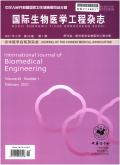Effect of tea polyphenols on diabetic nephropathy mice by regulating Nrf-2/ARE signaling pathway
引用次数: 0
Abstract
Objective To investigate the effects of tea-polyphenols on diabetic nephropathy (DN) mice by regulating nuclear factor E2-related factor 2/antioxidant response element (Nrf-2/ARE) signaling pathway. Methods A total of ten male 9-week-old normal (db/m) mice were randomly and equally divided into blank control group and tea-polyphenol control group, and ten male 9-week-old homologous type 2 diabetes (db/db) mice were randomly divided into model group and tea polyphenol treatment group. The animals in the tea-polyphenol control group and the treatment group were given 50 mg/(kg·d) tea-polyphenols by oral gavage, and the animals in the blank control group and model group were given same volume of double distilled water. The administration was once a day for 8 weeks. The blood glucose and 24-hour urine protein quantization (24 h-UP) were measured and recorded at 0, 4, and 8 weeks. After 8 weeks of the treatment, the mice were sacrificed. The intraocular blood stasis samples were collected for renal function indicators (serum creatinine and urea nitrogen), and kidney tissue samples were also collected for the tests of superoxide dismutase (SOD), reactive oxygen species, and malondialdehyde. Periodic acid Schiff reaction (PAS) staining was used to observe glomerular injury and scored. Western blot was used to detect the expression of Nrf-2 and hemeoxygenase-1 (HO-1) protein. Results Compared with the blank control group, the blood glucose and 24 h-UP of the mice in the model group and the tea-polyphenol treatment group increased after 4 and 8 weeks of the treatment (all P 0.05). Conclusions Renal tissue of DN mice will undergo significant oxidative stress injury. Tea-polyphenols may reduce the oxidative stress injury in DN mice by regulating the Nrf-2/ARE signaling pathway, and play a protective role in the kidney. Key words: Diabetic nephropathy; Tea-polyphenols; Nuclear factor E2-related factor 2/antioxidant response element signaling pathway; Oxidative stress茶多酚通过调节Nrf-2/ARE信号通路对糖尿病肾病小鼠的影响
目的探讨茶多酚通过调节核因子E2相关因子2/抗氧化反应元件(Nrf-2/ARE)信号通路对糖尿病肾病(DN)小鼠的影响。方法将10只雄性9周龄正常(db/m)小鼠随机等分为空白对照组和茶多酚对照组,10只雄性同源2型糖尿病(db/db)小鼠随机分为模型组和茶酚治疗组。茶多酚对照组和治疗组动物灌胃给予茶多酚50mg/(kg·d),空白对照组和模型组动物给予相同体积的双蒸馏水。给药8周,每天一次。在0、4和8周时测量并记录血糖和24小时尿蛋白定量(24h-UP)。治疗8周后,处死小鼠。收集眼内瘀血样本用于肾功能指标(血清肌酐和尿素氮),还收集肾组织样本用于超氧化物歧化酶(SOD)、活性氧和丙二醛的测试。采用PAS染色法观察肾小球损伤情况并评分。采用蛋白质印迹法检测Nrf-2和血红素氧合酶-1(HO-1)蛋白的表达。结果与空白对照组相比,模型组和茶多酚治疗组小鼠在治疗4周和8周后血糖和24h-UP均升高(均P<0.05)。茶多酚可通过调节Nrf-2/ARE信号通路减轻DN小鼠的氧化应激损伤,并在肾脏中发挥保护作用。关键词:糖尿病肾病;茶多酚;核因子E2相关因子2/抗氧化反应元件信号通路;氧化应激
本文章由计算机程序翻译,如有差异,请以英文原文为准。
求助全文
约1分钟内获得全文
求助全文

 求助内容:
求助内容: 应助结果提醒方式:
应助结果提醒方式:


